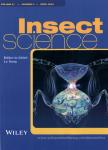Dispersal patterns of exotic forest pests in South Korea
Dispersal patterns of exotic forest pests in South Korea作者机构:Division of Forest Disease and Insect Pests Korea Forest Research Institute Dongdaemun Seoul Department of Biology and The Korea Institute of Ornithology Kyung Hee University Dongdaemun Seoul Republic of Korea
出 版 物:《Insect Science》 (昆虫科学(英文版))
年 卷 期:2012年第19卷第5期
页 面:535-548页
核心收录:
学科分类:0710[理学-生物学] 0830[工学-环境科学与工程(可授工学、理学、农学学位)] 0907[农学-林学] 07[理学] 090705[农学-野生动植物保护与利用] 09[农学] 0904[农学-植物保护] 0901[农学-作物学] 0713[理学-生态学]
基 金:the "Research on monitoring and forecasting of forest insect pests "Systems approach for the control of pine wilt disease" projects funded by the Korea Forest Research Institute
主 题:Bursaphelenchusxylophilus dispersal pattern exotic species fall webworm,forest management Hyphantria cunea Matsucoccus thunbergianae pine wilt disease,Thecodiplosis japonensis
摘 要:Invasive species have potentially devastating effects on ecological communi- ties and ecosystems. To understand the invasion process of exotic forest pests in South Korea, we reviewed four major species of exotic forest pests: the pine needle gall midge (Thecodiplosis japonensis), pine wilt disease caused by the pine wood nematode (Bur- saphelenchus xylophilus), the fall webworm (Hyphantria cunea) and the black pine bast scale (Matsucoccus thunbergianae). We consider their biology, ecology, invasion history, dispersal patterns and related traits, and management as exotic species. Among these species, the dispersal process of fall webworm was linear, showing a constant range expan- sion as a function of time, whereas the other three species showed biphasic patterns, rapidly increasing dispersal speed after slow dispersal at the early invasion stage. Moreover, human activities accelerated their expansion, suggesting that prevention of the artificial movement of damaged trees would be useful to slow expansion of exotic species. We believe that this information would be useful to establish management strategies for invasion species.



